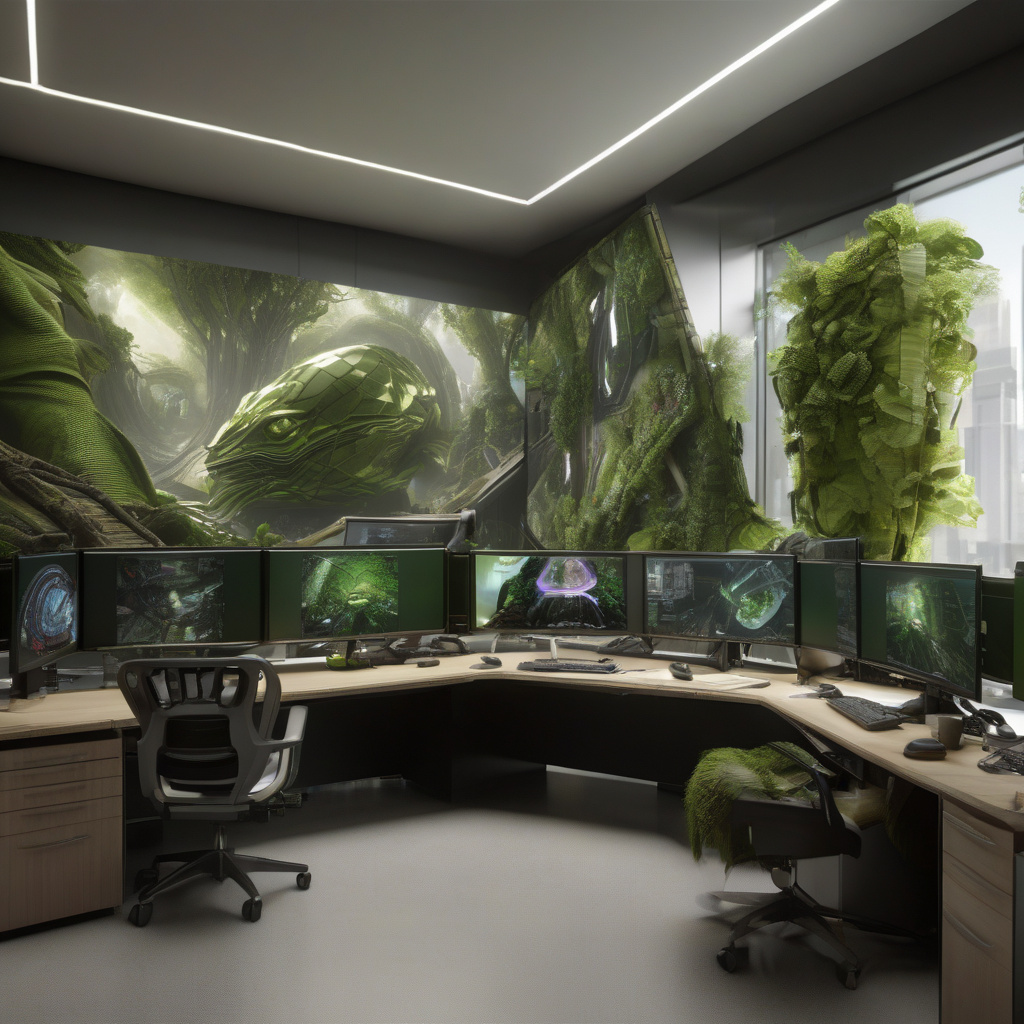Nvidia, a key player in the tech industry, has unveiled an exciting concept known as “Graphics 3.0.” This innovative approach aims to leverage AI-generated graphics to enhance physical productivity, particularly in industrial settings like factories and warehouses.
The core idea behind Graphics 3.0 is to harness the power of generative AI (genAI) tools to create graphics autonomously, without human intervention. By doing so, Nvidia envisions a future where AI-generated graphics play a crucial role in various applications, such as training robots for real-world tasks and automating the design and construction of equipment and structures.
During a recent keynote at SIGGRAPH 2025, Ming-Yu Liu, Nvidia’s vice president of research, emphasized the company’s belief in the transformative potential of Graphics 3.0, powered by AI. This new paradigm is poised to revolutionize industries by enabling AI to control robots, manage traffic signals, operate household appliances, drive autonomous vehicles, and oversee operations in offices, factories, and warehouses.
However, the transition to Graphics 3.0 poses unique challenges. Unlike virtual AI, which relies on abundant training data, physical AI requires pixel-level information that is not readily accessible. To address this limitation, Nvidia is developing synthetic data by simulating virtual environments, allowing AI models to learn from pixel-based experiences and accelerate the training of robots and other physical AI devices.
Jensen Huang, CEO of Nvidia, highlighted the significance of this shift, emphasizing how robots will redefine tasks in homes and industrial settings, leading to significant advancements in efficiency and safety. By leveraging AI models like Cosmos, robots can interpret commands, make decisions, and execute tasks in the physical world, bridging the gap between digital intelligence and real-world applications.
The emergence of Omniverse NuRec further exemplifies Nvidia’s commitment to advancing physical AI. This platform converts real-world sensor data into interactive simulations where robots can train and test their capabilities. By integrating cutting-edge tools and AI models, Omniverse NuRec enables the creation, rendering, and enhancement of immersive 3D environments for a wide range of applications.
Moreover, Nvidia’s focus on AI material-generation tools underscores its dedication to creating hyper-realistic graphics with intricate visual details. By empowering 3D experts and engineers to communicate with AI assistants using natural language, the company is democratizing access to advanced graphics capabilities and streamlining the creative process.
In conclusion, Nvidia’s vision for Graphics 3.0 represents a significant leap forward in the integration of AI-driven graphics into physical workflows. By harnessing the power of generative AI and synthetic data, Nvidia is paving the way for a future where intelligent systems enhance productivity, efficiency, and innovation across various industries.

